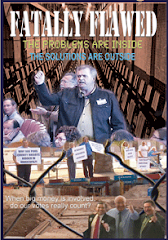May 2006 RTA election results tabulated by Pima County elections Division compared with the Maricopa County Elections Division hang(d) recountQuestion 1
"Do you approve of the regional transportation plan for Pima County?"
Pima County election canvass:
Yes - 71,948 - about 60.05 percent
No: 47,870 - about 39.95 percent
Maricopa County Elections Division hand recount:
Yes - 71,626 - about 60.06 percent
No - 47,636 - about 39.94 percent
Difference: 556 votes
Question 2:
"Do you favor the levy of a transaction privilege tax for regional transportation purposes in Pima County?"
Pima County election canvass:
Yes - 68,773 - about 57.64 percent
No - 50,551 - about 42.36 percent
Maricopa County Elections Division hand recount:
Yes - 68,420 - about 57.63 percent
No - 50,306 - about 42.37 percent
Difference: 598 votes
April 21, 2009, 5:24 p.m.
GARRY DUFFY
Tucson CitizenArizona Attorney General Terry Goddard said Tuesday that a hand recount of the 2006 Regional Transportation Authority election showed no evidence of criminal tampering with the results.
Goddard also said the recounted ballots matched almost exactly the results tabulated by Pima County Elections Division staffers after the election.
"The bottom line of what we've shown here is that there was no flip," Goddard said.
Goddard earlier this year ordered a hand count of ballots from the RTA election, in which county voters approved two ballot items - creation of a Regional Transportation Authority and a half cent sales tax to help fund projects to be overseen by the agency.
Voters approved a 20-year $2.1 billion regional transportation plan and an accompanying half-cent sales tax increase by wide margins, the upheld election results show.
Four previous major transportation initiatives to be funded by bonds or sale taxes had been strongly rejected by voters over the previous 15 years.
Goddard was trying to determine if the vote was rigged by someone through tampering with electronic vote devices or with ballot tabulating procedures following the election.
"It appeared there was reasonable suspicion that a crime had been committed" Goddard said of claims by critics of computerized vote systems that tampering did indeed take place.
Those included illegal printing of early ballot returns five days before the election, and the presence of a crop card, which is a device that can be used to alter results in the elections division offices.
Although Goddard said the criminal investigation is closed, he would not comment on whether a grand jury has looked or is looking into the conduct of the election.
Goddard ordered the hand recount to be undertaken by the Maricopa County Elections Division earlier this month to find out.
His office had probed the Pima County Elections Division and its use of a Diebold-GEMS electronic vote systems in 2007, which have been widely criticized for being vulnerable to manipulation in several ways.
That probe found serious security flaws in the system and elections division, but no criminal actions.
"I think it proves we've been vindicated," County Administrator Chuck Huckelberry, said Tuesday.
"It was very disturbing that the staff had to suffer those unwarranted insults and charges," Huckelberry added.
The case started in 2007 when the Pima County Democratic Party sought access to the county's electronic vote databases from previous elections.
Party officials said they wanted to be able to check the reliability of electronic vote systems after widespread complaints from across the country that such systems were hackable and results could be manipulated.
Pima County Superior Court Judge Michael Miller ruled in December 2007 that the county must surrender some past election databases - the first such court order to a government to turn over electronic vote records.
The order omitted the RTA databases, which were later released to the Democrats early last year by the Pima County Board of Supervisors.
Over 120,000 ballots were recounted by Maricopa County officials and reaffirmed the original tally.
RTA executive director Gary L. Hayes said after Goddard's press conference that agency staffers worked straight through the court case and AG's investigation, assuming that the vote totals would be upheld.
"Of course there is uncertainty," Hayes said. "But from day one we've tried to stay the course on how the voters approved it."
The Associated Press contributed to this report

































